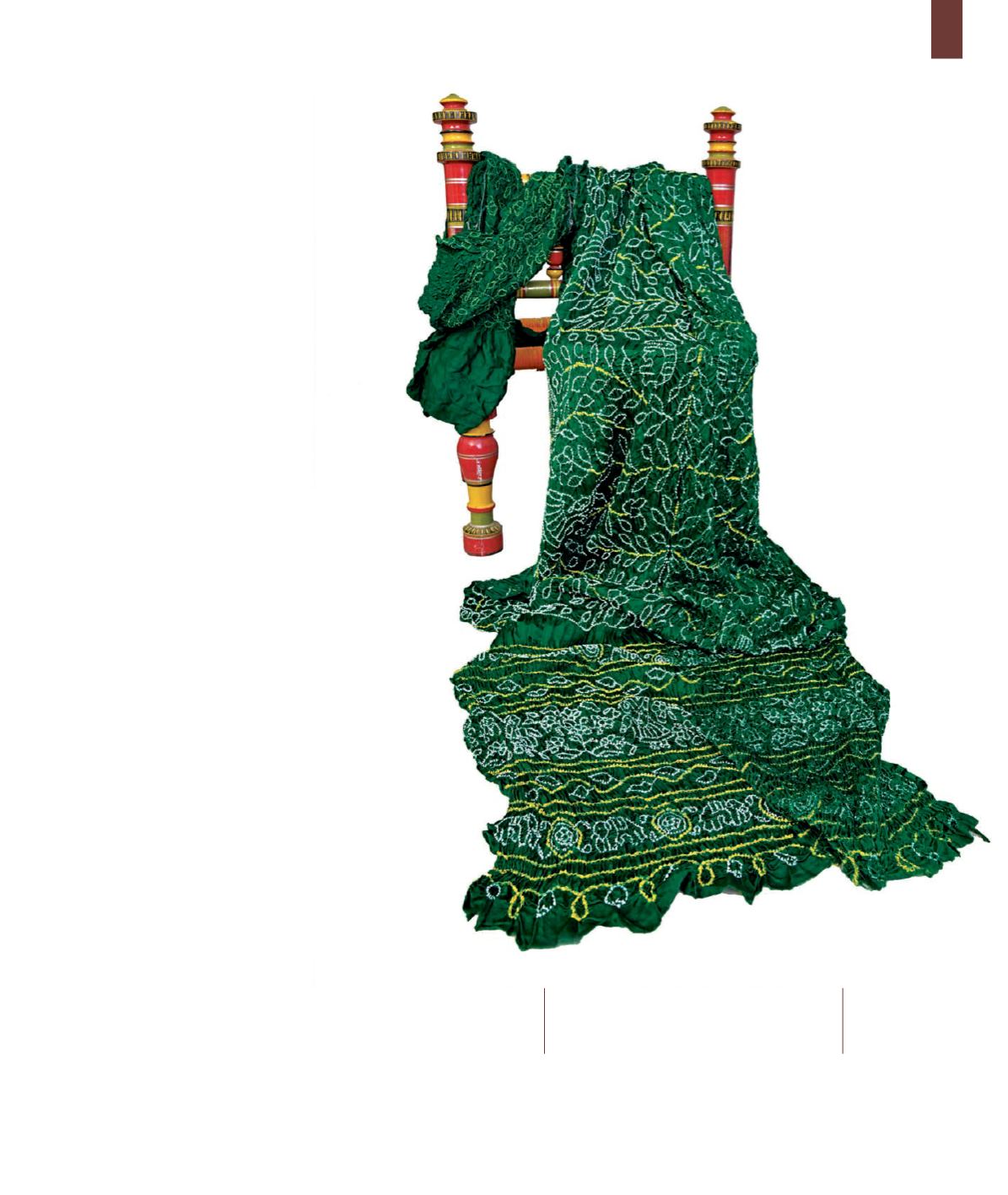
75
In Mumbai, he picked up the craft and
stayed on in the city. He worked under
Khatri Kasam Amir Ahmed and became
accomplished at the technique. He learnt
about different dyes for different fabrics
such as cotton and silk of different varieties,
wet-colours, the technique of tying fine
knots, dyeing cloth in eye-catching colours,
drying the cloth between different stages of
dyeing and the final drying. He learnt how
to create intricately-patterned fabrics and
brilliantly-coloured textiles. He also learnt
the art of drawing intricate designs on cloth
and bringing these alive with Bandhani or
tie-dye work.
Independent Craftsmanship
After years of practice in Mumbai my father
returned to Gujarat. In 1971, he started
his own tie-dye unit in Jamnagar. Then
when the India-Pakistan war broke out in
December 1971, he returned to Kutch and
started a unit producing Bandhani, Batik
and Ajrakh in Tera and Bhujpur. My father
was a master craftsman with a creative
approach. On the one hand he preserved
the traditional expression of the craft and
on the other, he developed it with modern
motifs and different colours thus giving
it a new expression. In terms of craft his
accomplishment was to tie-dye textiles with
many colours.
As is known, Bandhani involves holding tiny
bits of fabric, tying them with a yarn, and
then dyeing the cloth. On removing the yarn,
small roundels are formed by the sections
that were tied. This is if only one colour of
dye is used. However, my father worked with
Bandhani involves holding tiny
bits of fabric, tying them with a
yarn, and then dyeing the cloth.


